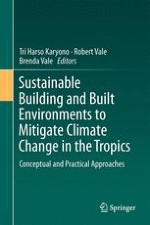2017 | OriginalPaper | Buchkapitel
17. Plant Selection and Placement Criteria for Landscape Design
verfasst von : Chun Liang Tan, Nyuk Hien Wong, Steve Kardinal Jusuf
Erschienen in: Sustainable Building and Built Environments to Mitigate Climate Change in the Tropics
Aktivieren Sie unsere intelligente Suche, um passende Fachinhalte oder Patente zu finden.
Wählen Sie Textabschnitte aus um mit Künstlicher Intelligenz passenden Patente zu finden. powered by
Markieren Sie Textabschnitte, um KI-gestützt weitere passende Inhalte zu finden. powered by
